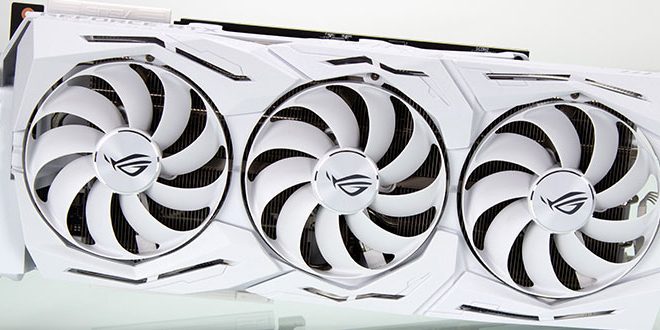3DMark Fire strike

In Firestrike ultra, the TITAN RTX holds a solid lead over the ASUS 2080 Ti. However, moving to the slightly lighter load of the Extreme Firestrike variant and the ASUS 2080 Ti sneaks past the TITAN RTX, which is a testament to the GPUs capabilities.
3DMark Time Spy

In Time Spy, we see more of the same as on the heaviest loading (Time Spy Extreme) the TITAN RTX wins again, but by a razor-thin margin. The lower loading standard Time Spy test, we find that the ASUS 2080 Ti slightly outpaces the TITAN RTX once again. This is likely due to the thermals provided by the ASUS cooling solution and its ability to keep the card at higher boost levels under loading.
VRMark

VRMark has three levels, Easiest being Orange, then heavy being Cyan and insane mode being Blue. We are omitting Orange as every current card maxes it out, and it is no longer a very viable representation of performance.
Cyan, we see the ASUS 2080 Ti top the chart here beating the TITAN RTX steadily, while completely obliterating the 2080 Ti FE.
Blue, as I said, is “insane mode” and it shows as the ASUS 2080 Ti further smack down the crowd here.
Unigine Heaven 4.0 Pro

Heaven is a long time test ion our suite. It is from Unigine and pushes tessellation and some heavy GPU loading.
While Heaven may be aging, putting it at 4K still puts some hurt on the GPU and can give you an excellent view of raw performance scaling. Here we see the ASUS RTX 2080 Ti fall to the TITAN RTX again, but we see a defined gain on the FE model 2080 Ti of 7%.
Unigine Superposition Pro
Superposition is the newest benchmark from Unigine and is better aligned with testing the newer cards we are testing today.

Here, with Unigine Superposition, we see the ASUS 2080 Ti just on the heels of the TITAN RTX and outpacing the 2080 Ti FE model by 7% once again.
 Bjorn3D.com Bjorn3d.com – Satisfying Your Daily Tech Cravings Since 1996
Bjorn3D.com Bjorn3d.com – Satisfying Your Daily Tech Cravings Since 1996

















Only galax knows how to make a white card